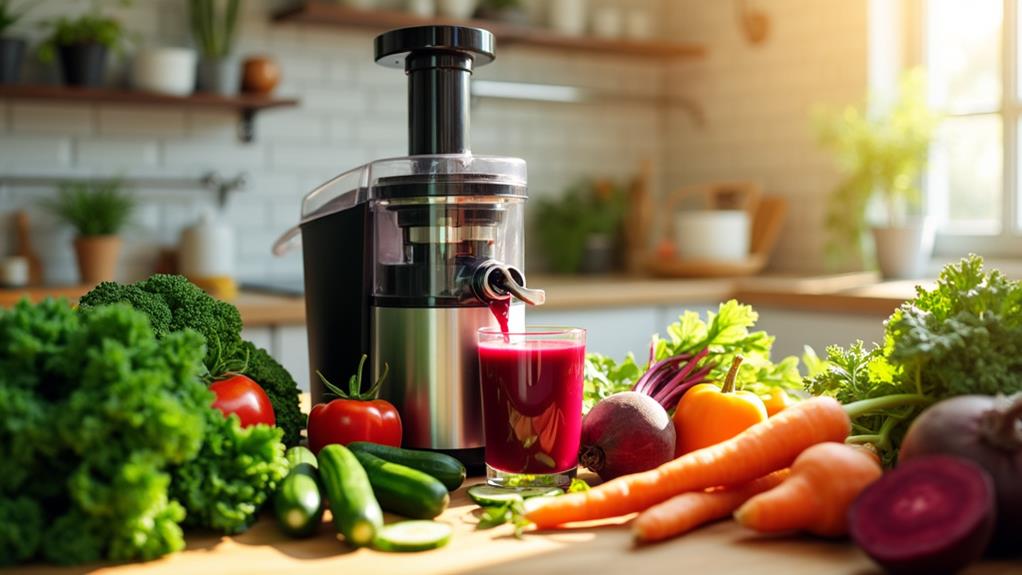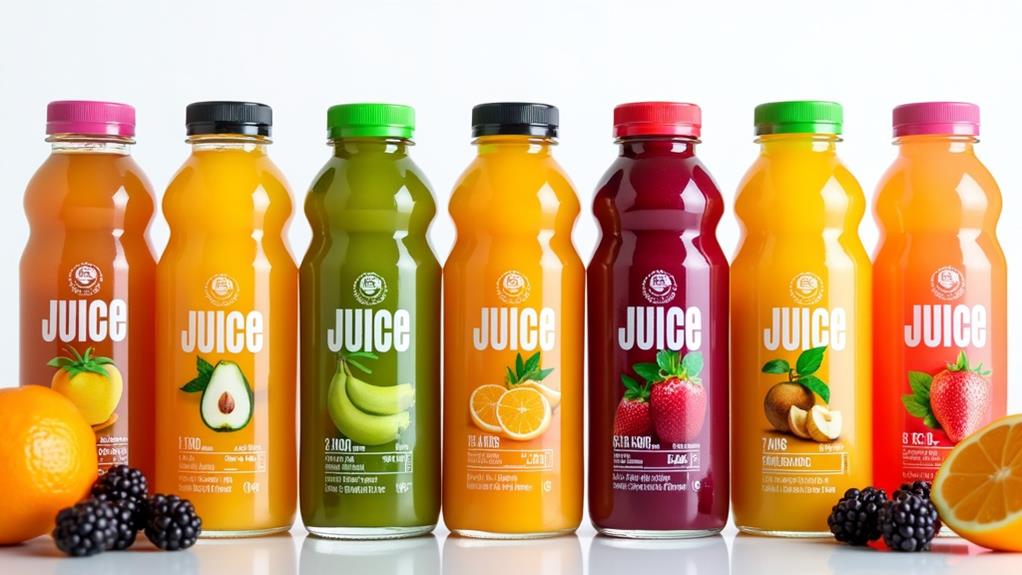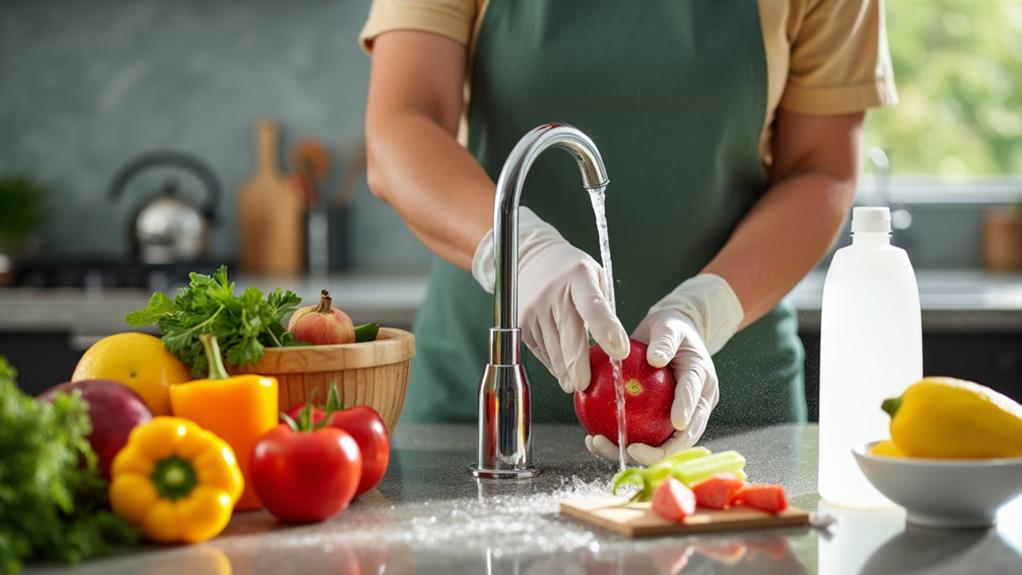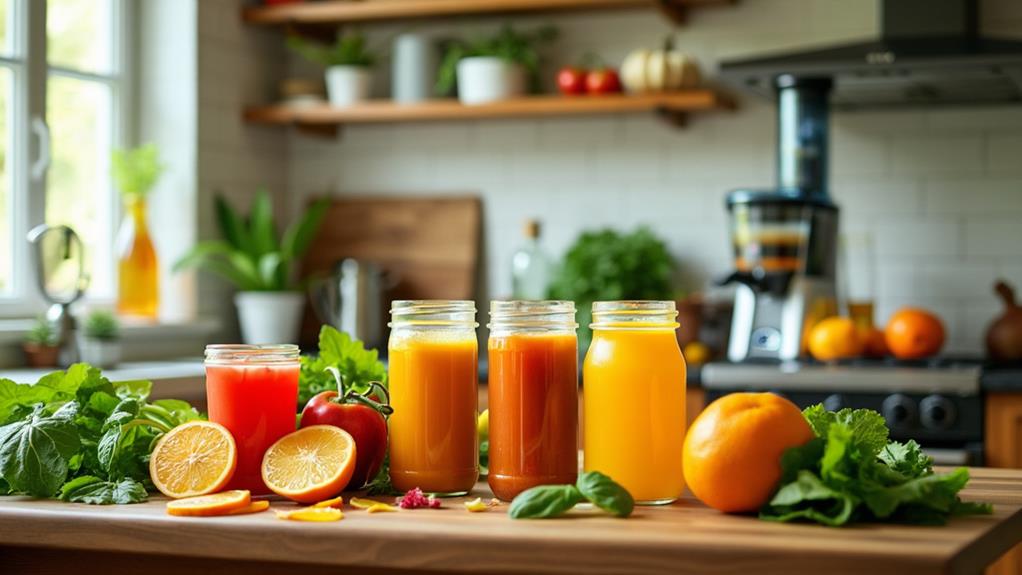Essential Do's and Don'ts of Juicing
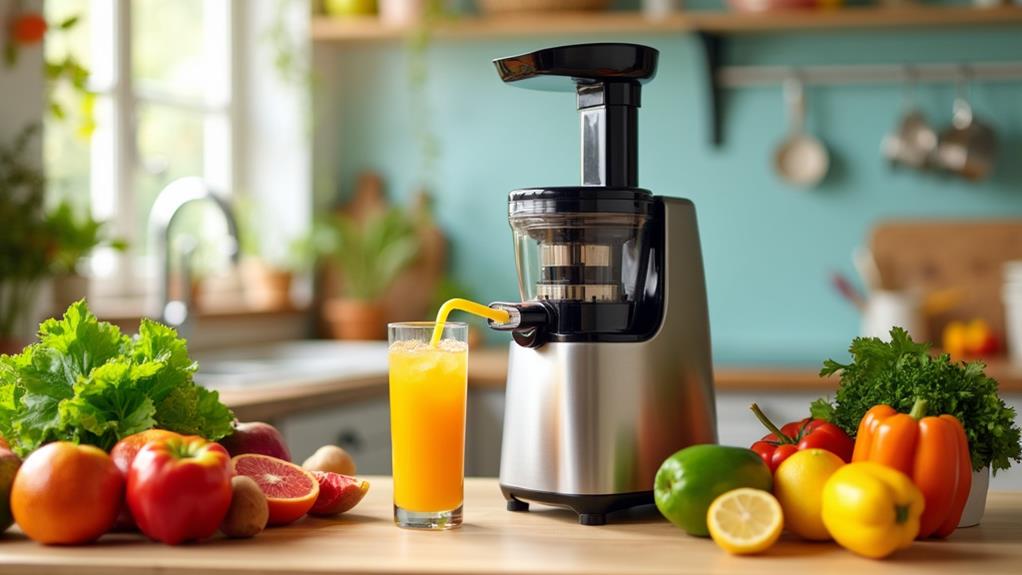
When juicing, thoroughly wash all fruits and vegetables to remove pesticides and bacteria, ensuring optimal health benefits. Aim for a balanced ratio of 40% fruits and 60% vegetables to manage sugar content, especially if you are diabetic. Avoid mixing starchy vegetables with high-sugar fruits to prevent digestive issues. Consume your juice immediately to maximize nutritional value. Clean your juicer right after use to maintain its performance and longevity. Interested in the best flavor combinations and tips for ingredient quality?
Washing and Preparing Ingredients
Washing and preparing your ingredients are crucial steps for both safety and flavor in juicing. Properly washing fruits and vegetables with hot water effectively removes contaminants like pesticides and bacteria, ensuring a safer juice preparation. Germs can transfer from surfaces during peeling and cutting, making thorough washing essential for enhancing the health benefits of your juice.
Careful preparation of ingredients helps preserve the natural sugars and nutrients found in whole fruits and vegetables. Gentle methods, such as rough chopping instead of aggressive cutting, maintain the nutritional integrity of your ingredients. This attention to detail not only improves the quality and flavor of your juice but also ensures you receive maximum health benefits.
Using seasonal and local produce can further enhance the freshness and quality of your ingredients. Fresh, locally-sourced fruits and vegetables are often more nutritious and flavorful, enriching your juicing experience. Therefore, take the time to wash and prepare your ingredients properly. This small step significantly impacts the taste and health benefits of your juice.
Balancing Fruits and Vegetables
Balancing fruits and vegetables in your juice is essential for flavor and nutritional balance. Aim for a mix of 40% fruits and 60% vegetables to manage sugar content and maintain stable blood sugar levels. Leafy greens like kale and spinach are excellent bases as they provide important nutrients without overpowering the taste of your juice.
Diabetics should be particularly cautious with fruit intake to prevent spikes in blood sugar levels. Instead, focus on vegetables like cucumbers and celery, which have high water content. These vegetables can help dilute the sweetness from fruits, enhancing hydration and making your juice more refreshing.
Combining tart fruits like green apples or lemons with sweeter fruits can create a balanced flavor profile. This approach not only satisfies your taste buds but also helps in managing sugar levels effectively. Remember, a balanced diet is key to health and wellness, and your juice should reflect that.
Timing and Consumption
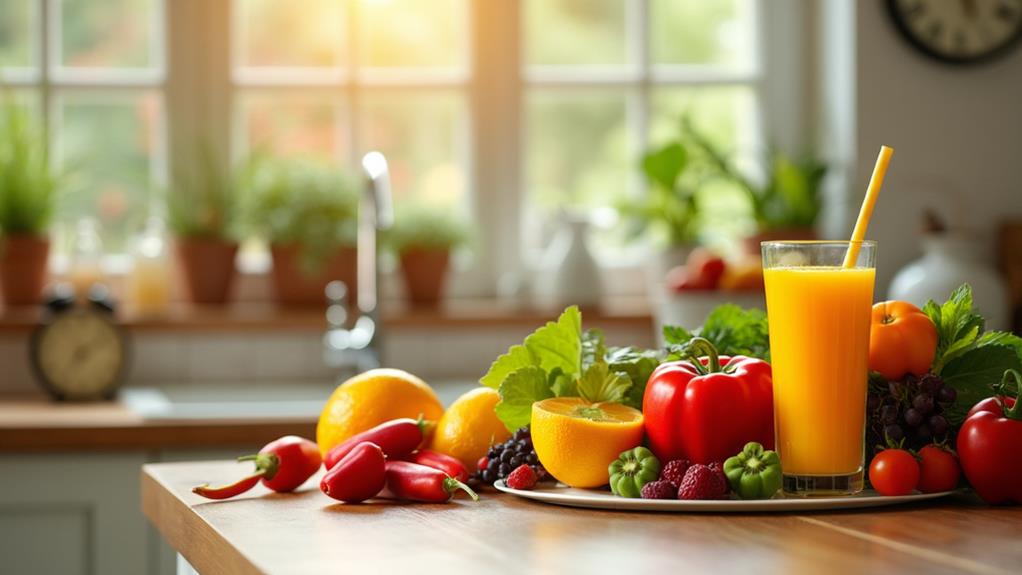
Maintaining a balanced mix of fruits and vegetables in your juice is just one aspect; the timing and manner of consumption significantly affect its benefits. To maximize nutrient absorption, it is best to drink your juice on an empty stomach, ideally 20 minutes before a meal or two hours after. This allows for more efficient nutrient uptake without interference from other foods.
Consume your juice immediately to preserve its freshness and nutritional value. Fresh juice begins to lose nutrients rapidly due to oxidation. If storage is necessary, keep it refrigerated and consume it within 24 hours. However, immediate consumption remains optimal for maximum benefits.
Sip your juice slowly rather than gulping it down to avoid stomach discomfort and enhance nutrient absorption. Juicing should supplement a balanced diet that includes whole foods, ensuring a broad spectrum of nutrients and preventing excessive sugar intake from fruit juices.
Incorporate fresh juice into your daily routine thoughtfully. Prioritizing the timing and method of consumption will help you maximize the benefits of juicing, thereby supporting your overall health and well-being.
Quality of Ingredients
Choosing high-quality ingredients is essential for making nutritious and delicious juice. Selecting fresh, organic produce enhances the nutritional value of your juice and helps you avoid harmful toxins and pesticides. The quality of your ingredients directly affects the effectiveness of your juicer and the health benefits of the juice. Seasonal and local fruits and vegetables often offer better flavor and higher nutritional value.
Fresh, high-quality ingredients provide a higher concentration of vitamins and minerals, which are crucial for your health. Opt for ripe fruits and fresh vegetables to ensure peak taste and nutrient density. Using overripe or spoiled produce can result in off-flavors and reduced nutritional content, negatively impacting your juicing routine. Always wash your produce thoroughly to remove any contaminants, as improper cleaning can negate the health benefits.
Here's a quick guide to help you choose the best ingredients:
| Category | Best Practices |
|---|---|
| Organic vs. Non-Organic | Choose organic to avoid toxins and pesticides. |
| Local vs. Imported | Opt for local produce for better flavor and nutrients. |
| Freshness | Use ripe, fresh produce for maximum vitamins and minerals. |
Flavor Combinations
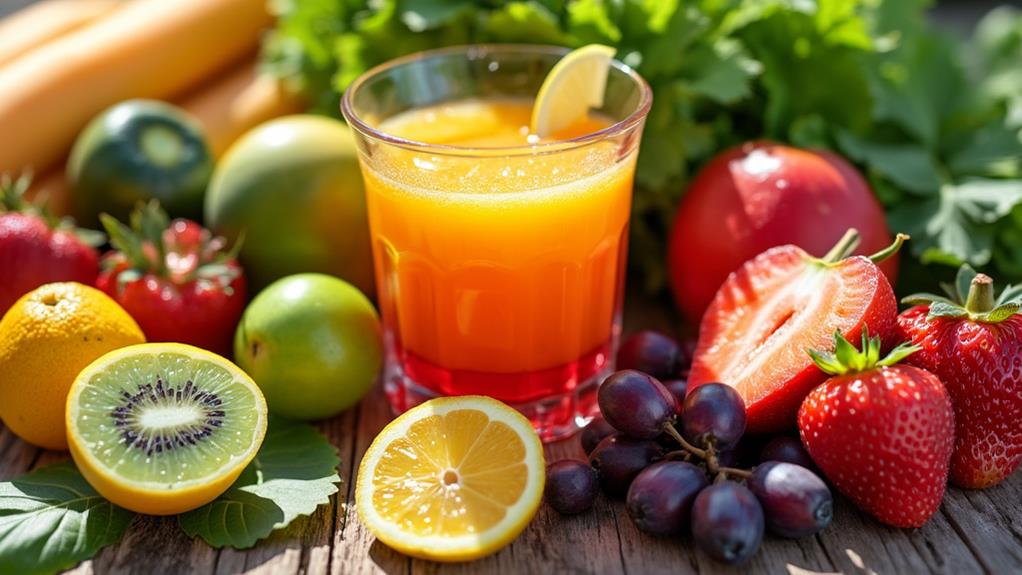
Crafting the perfect juice requires a blend of creativity and knowledge of flavor combinations. Start with whole, soft fruits that are easier on your juicer and digestive system. Leafy greens like kale and spinach enhance nutrient intake without making your juice overly sweet.
Balance high-sugar fruits, such as bananas and grapes, with tart or bitter ingredients like lemon or cucumber to prevent excessive sugar content. Melons should be juiced alone due to their high water content, which can interfere with digestion when mixed with other fruits and vegetables.
Avoid combining starchy vegetables like carrots or sweet potatoes with high-sugar fruits to prevent bloating; juice these separately. Experiment with herbs and spices like ginger or mint for unique flavors and added health benefits.
For the freshest taste and maximum nutrient retention, consume your juice immediately after making it. This ensures you get the best from your ingredients while supporting your digestive system effectively. Following these guidelines will help you create balanced, flavorful juices every time.
Juicer Maintenance
After mastering the art of flavor combinations, maintaining your juicer is your next priority. Proper juicer upkeep is essential for ensuring the quality and safety of your juices. Begin by cleaning the juicer immediately after each use to prevent residue buildup, which can lead to contamination and affect future juice quality.
Disassemble the juicer parts for a thorough cleaning, ensuring that every component, including the strainer and pulp bin, is free from lingering pulp and juice remnants. This step is crucial for preventing stains and odors. If your juicer has dishwasher-safe components, use the dishwasher to save time and effort, but always check the manufacturer's manual for specific guidelines.
In addition to daily cleanups, regular maintenance is indispensable. Check for any wear and tear on parts to prolong the lifespan of your juicer and ensure optimal performance. Establish a routine for prompt cleanup after each juicing session to keep your equipment in excellent condition. By following these steps, you'll enjoy fresh, delicious juice every time and extend the life of your juicer.

